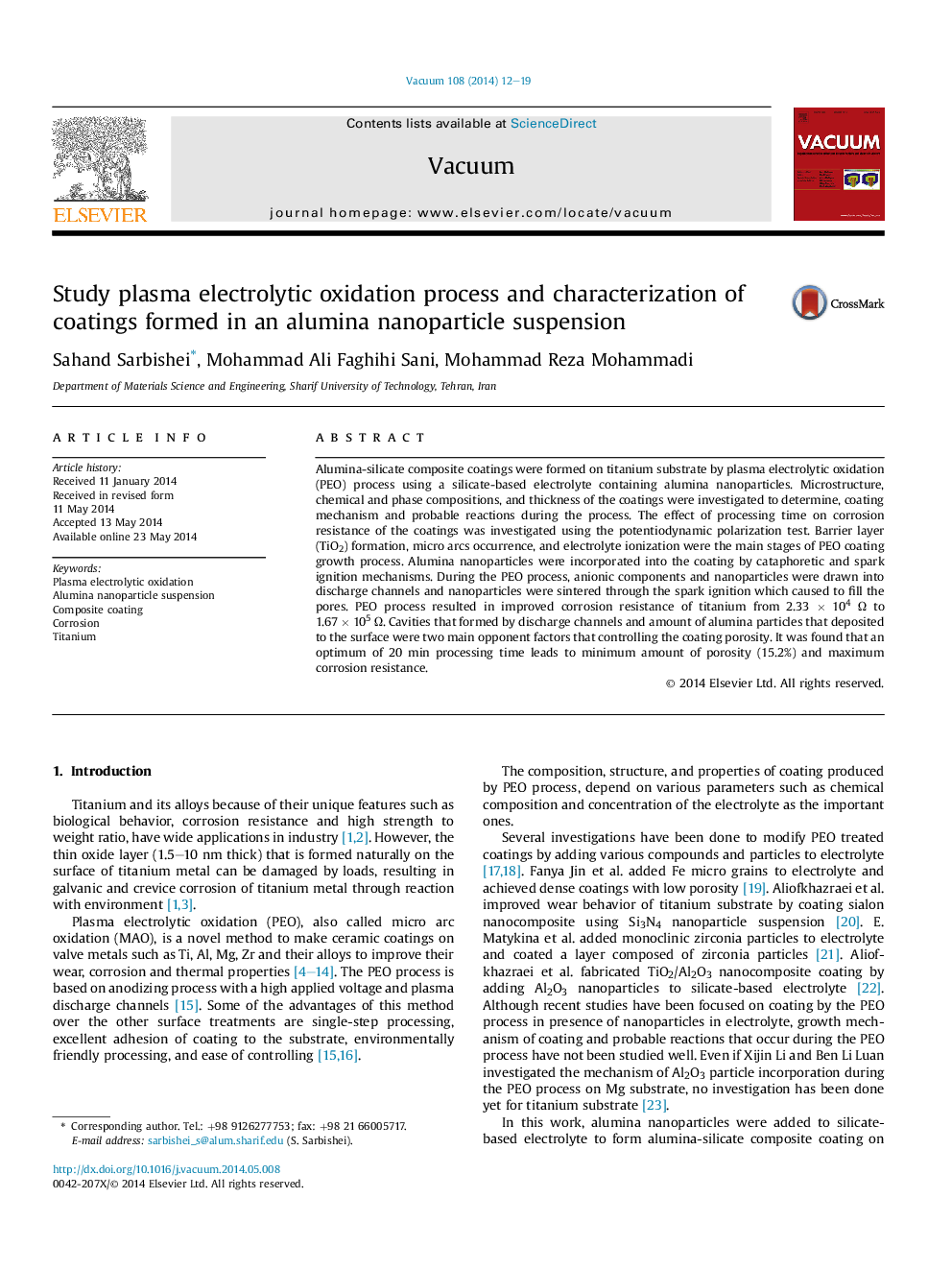| کد مقاله | کد نشریه | سال انتشار | مقاله انگلیسی | نسخه تمام متن |
|---|---|---|---|---|
| 1689863 | 1518961 | 2014 | 8 صفحه PDF | دانلود رایگان |
• Composite coatings were formed in an alumina nanoparticle suspension by PEO.
• Cataphoretic and spark ignition were main mechanisms of particles absorption.
• V–t plot stages were anodizing process, porous layer formation, and coating growth.
• Over the time, energy of micro arcs raised and more nanoparticles deposited.
• Filling the pores, nanoparticles improved corrosion resistance of titanium.
Alumina-silicate composite coatings were formed on titanium substrate by plasma electrolytic oxidation (PEO) process using a silicate-based electrolyte containing alumina nanoparticles. Microstructure, chemical and phase compositions, and thickness of the coatings were investigated to determine, coating mechanism and probable reactions during the process. The effect of processing time on corrosion resistance of the coatings was investigated using the potentiodynamic polarization test. Barrier layer (TiO2) formation, micro arcs occurrence, and electrolyte ionization were the main stages of PEO coating growth process. Alumina nanoparticles were incorporated into the coating by cataphoretic and spark ignition mechanisms. During the PEO process, anionic components and nanoparticles were drawn into discharge channels and nanoparticles were sintered through the spark ignition which caused to fill the pores. PEO process resulted in improved corrosion resistance of titanium from 2.33 × 104 Ω to 1.67 × 105 Ω. Cavities that formed by discharge channels and amount of alumina particles that deposited to the surface were two main opponent factors that controlling the coating porosity. It was found that an optimum of 20 min processing time leads to minimum amount of porosity (15.2%) and maximum corrosion resistance.
Journal: Vacuum - Volume 108, October 2014, Pages 12–19
